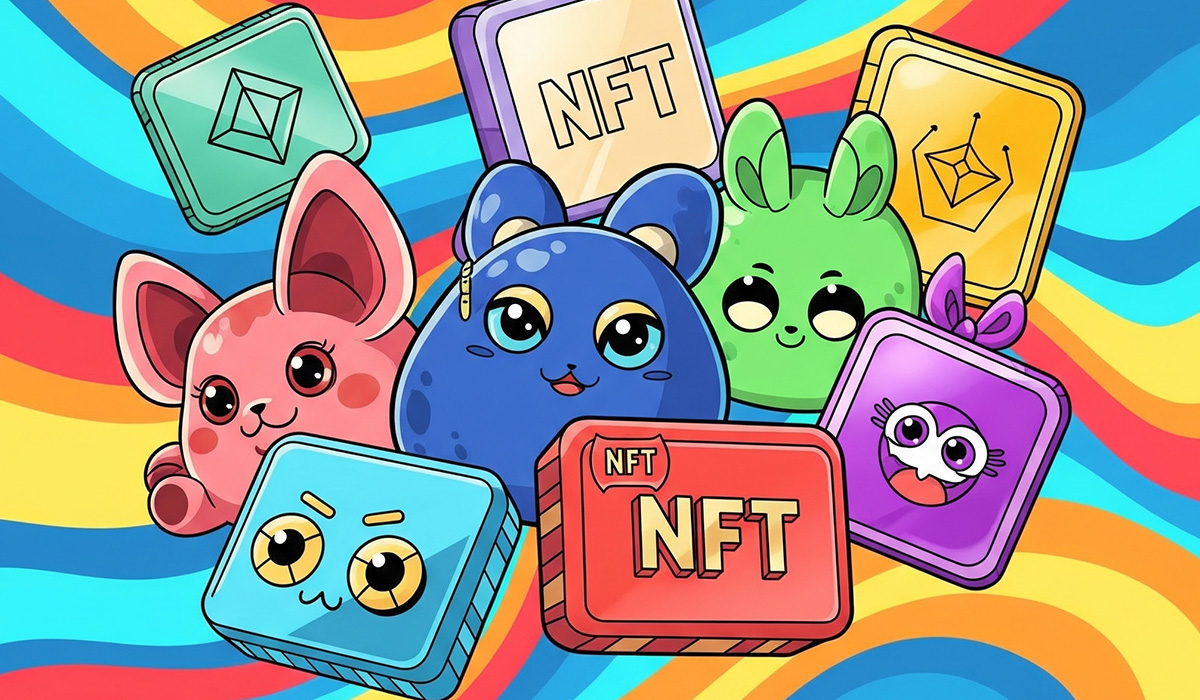Course Lessons
- What in the World is an NFT?
- Types of NFTs
- NFT Case Study, Bored Ape Yacht Club (BAYC)
- Getting Started with NFTs

Let’s say your friend sends you a picture of a cat. You can copy it, share it, or save it to your phone. But can you prove that you own the original? I bet not. And that’s where NFTs come in.
Short for Non-Fungible Token, an NFT is a unique digital item that represents the ownership of something like art, music, videos, game items, or even tweets. Now let’s unpack this:
- Non-fungible means it’s one of a kind. It can’t be swapped with something else on a 1-to-1 basis like money. A $1000 bill is fungible because it can be replaced by another $1000 bill. But a limited-edition painting is non-fungible.
- A token is just a digital proof that says “This is yours,” and it’s stored safely on a blockchain (i.e., a secure, public digital ledger).
So, in simple terms, an NFT is like owning the original version of a digital item. People may screenshot it, but you hold the ownership badge. For example, if you own a signed football jersey from your favourite player. Others can buy similar ones, but yours has the signature, the personal proof that it’s special. In the digital world, NFTs act like that signature. They prove ownership, and that’s what makes them valuable.
A Brief History of NFTs
Although NFTs became a media sensation in 2021, their history goes back years earlier. Here’s a quick timeline on the history of non-fungible tokens.
- 2014 – The first NFT was created by a digital artist named Kevin McCoy.
- 2017 – Collectibles like CryptoPunks and CryptoKitties became popular. People started trading digital cats and pixel faces like Pokémon cards.
- 2021 – NFTs exploded after an artist called Beeple sold a digital artwork for $69 million. Celebrities joined in, brands followed, and suddenly, NFTs were everywhere. The rest they say is history.
Why Are NFTs a Big Deal?
1. Digital Ownership is Finally Real: For the first time, you can own something online in a way that can’t be faked or stolen. The blockchain keeps track of who owns what, like a public diary that no one can edit.
2. Creators Get Paid (Even After the First Sale!): Unlike traditional art, NFT artists can earn royalties each time their work is resold. That means they keep getting paid as their work grows in value.
3. Anyone Can Join: You don’t need to be a famous artist to create or collect NFTs. If you have a phone and an idea, you can participate.
4. Communities & Experiences: Some NFTs offer more than just a picture. They come with access to private clubs, events, games, or other digital goodies.